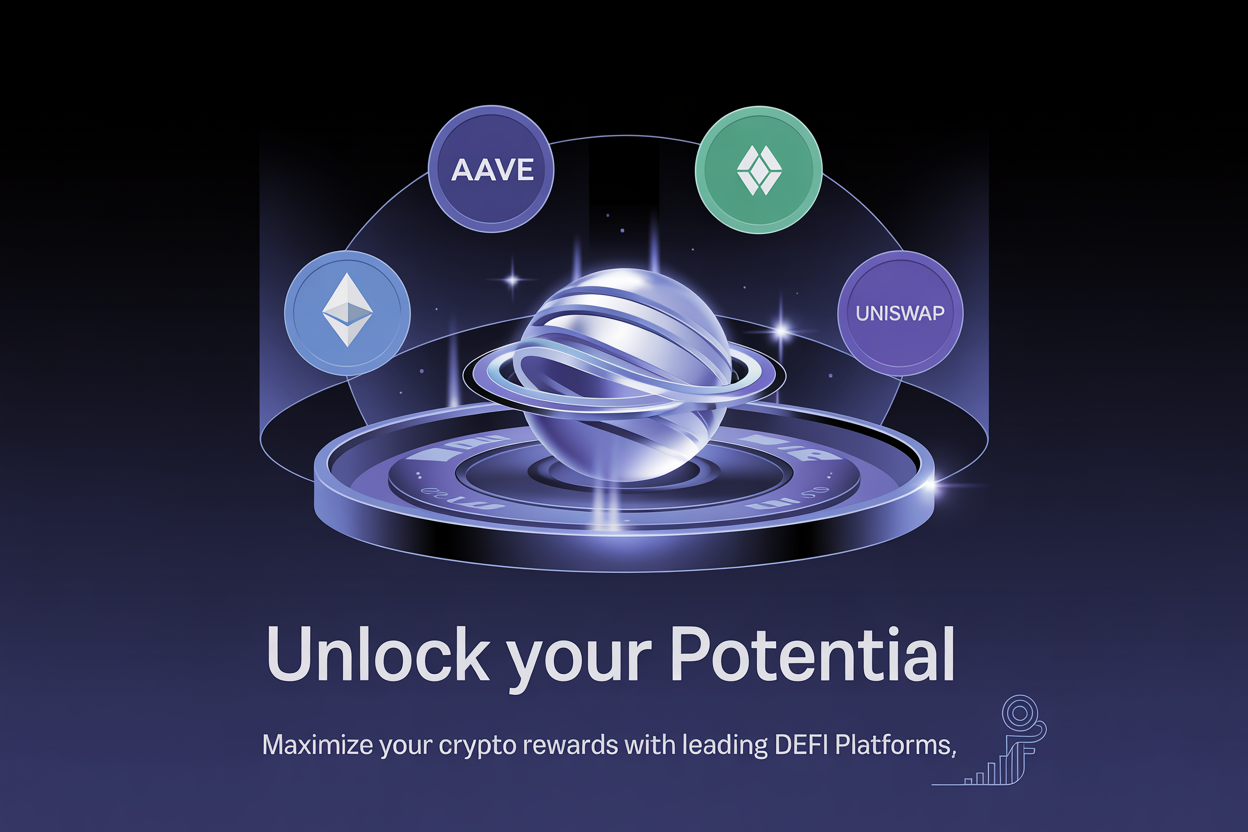Now Reading: Crypto Rewards vs Cashback: Comparing the Benefits
- 01
Crypto Rewards vs Cashback: Comparing the Benefits
Crypto Rewards vs Cashback: Comparing the Benefits

The rise of digital currencies has led to a growing interest in crypto rewards vs traditional cashback programs, with many consumers seeking to understand the benefits of each option. A comparison of crypto rewards vs traditional cashback reveals distinct differences in their approach to rewarding consumers. The benefits of crypto rewards vs traditional cashback are numerous, and a thorough comparison is necessary to determine which option offers more value for your spending.
A thorough comparison of crypto rewards vs traditional cashback will help consumers make informed decisions about their spending habits. By examining the benefits of each option, consumers can choose the rewards program that best aligns with their financial goals. The comparison of crypto rewards vs traditional cashback is essential in understanding the advantages and disadvantages of each option, ultimately leading to a more rewarding spending experience.
Introduction to Comparison
The goal of this article is to provide an in-depth comparison of crypto rewards vs traditional cashback, highlighting their benefits and differences. By exploring the advantages and disadvantages of each option, readers will gain a deeper understanding of the value proposition of crypto rewards vs traditional cashback.
Key Takeaways
- Crypto rewards offer a new way to earn rewards for spending
- Traditional cashback programs provide immediate benefits
- A comparison of crypto rewards vs traditional cashback is necessary to determine which option is best
- Crypto rewards have the potential for long-term appreciation
- Traditional cashback programs are widely accepted and easy to use
- Crypto rewards vs traditional cashback comparison is essential for making informed decisions
Understanding the Basics of Reward Programs
Reward programs have become a staple in the world of consumer spending, offering a range of benefits to customers. At their core, these programs provide cashback incentives or other rewards for making purchases. The most common type of reward program is the traditional cashback program, which offers a percentage of the purchase amount back to the consumer.
In recent years, a new type of reward program has emerged: crypto rewards. These programs provide rewards in the form of digital currencies, such as Bitcoin or Ethereum, offering a new earning option for consumers. To understand the basics of these programs, it’s essential to explore their evolution and key characteristics.
Key Characteristics of Reward Programs
- Traditional cashback programs: offer a percentage of the purchase amount back to the consumer
- Crypto rewards: provide rewards in the form of digital currencies
- Rewards program options: vary depending on the provider and type of program
By understanding the basics of reward programs, consumers can make informed decisions about which type of program best suits their needs. Whether it’s a traditional cashback program or a crypto rewards program, the key is to find a program that offers the right earning options and benefits.
The Fundamental Differences Between Crypto Rewards and Traditional Cashback
The primary differences between crypto rewards and traditional cashback programs lie in the type of reward offered. Crypto rewards provide digital currencies, which can appreciate in value over time, while traditional cashback programs offer a fixed percentage of the purchase amount. This comparison highlights the unique characteristics of each option.
When considering the benefits of each program, it’s essential to weigh the potential risks and rewards. Crypto rewards offer the potential for long-term appreciation, but also come with market volatility. Traditional cashback programs, on the other hand, provide a fixed reward, but may not offer the same potential for growth.
Some key points to consider when evaluating crypto rewards and traditional cashback programs include:
- Potential for appreciation
- Market volatility
- Fixed reward structure
- Risk tolerance
In conclusion, the choice between crypto rewards and traditional cashback programs depends on individual preferences and financial goals. By understanding the differences and benefits of each option, consumers can make informed decisions that align with their spending habits and risk tolerance.
How Crypto Rewards Work in Practice
Crypto rewards are a type of digital currency rewards that can be earned through various mechanisms, such as making purchases with a specific credit card or using a particular app. These earning options provide users with a unique way to accumulate digital currency rewards, which can then be redeemed for other digital currencies or fiat currencies.
Earning Mechanisms
There are several ways to earn crypto rewards, including:
- Making purchases with a crypto rewards credit card
- Using a crypto rewards app for daily transactions
- Participating in online surveys or offers
These earning mechanisms provide users with a range of options to accumulate crypto rewards, which can then be used to redeem digital currency rewards.
Redemption Process
The redemption process for crypto rewards typically involves exchanging the earned rewards for other digital currencies or fiat currencies. This process can be done through a crypto rewards platform or a digital wallet, and the redeemed rewards can be used for various purposes, such as making purchases or transferring funds.
Storage and Security
It is essential to consider the storage and security of crypto rewards, as they can be vulnerable to hacking and other security risks. Users should use a secure digital wallet to store their crypto rewards and take necessary precautions to protect their accounts and transactions.
Traditional Cashback Programs: A Detailed Look
Traditional cashback programs have been a staple in the rewards landscape for decades, offering consumers a percentage of their purchase amount back in the form of cash or credit. These programs are often tied to loyalty programs, providing consumers with a way to earn rewards on their everyday purchases. Traditional cashback programs can be categorized into different types, including flat-rate cashback and tiered cashback programs.
One of the primary benefits of traditional cashback programs is the cashback incentives they offer. Consumers can earn a certain percentage of their purchase amount back, which can be redeemed for cash or credit. This type of reward structure is often straightforward and easy to understand, making it appealing to consumers. Additionally, traditional cashback programs are often tied to loyalty programs, which can provide consumers with exclusive benefits and rewards.

Some examples of traditional cashback programs include credit card rewards programs and retail loyalty programs. These programs often offer traditional cashback rewards, such as a percentage of the purchase amount back, or cashback incentives, such as exclusive discounts or promotions. By understanding how traditional cashback programs work, consumers can make informed decisions about which programs to participate in and how to maximize their rewards.
Value Proposition of Crypto Rewards vs Traditional Cashback
The value proposition of crypto rewards and traditional cashback programs differs significantly. Crypto rewards offer a potential for long-term appreciation, as the value of digital currencies can increase over time. In contrast, traditional cashback programs provide immediate benefits, but the value of the rewards may not appreciate over time.
When considering investment opportunities, crypto rewards may offer a higher potential for growth, but they also come with higher risks. Traditional cashback programs, on the other hand, provide a more stable and predictable reward structure. The benefits of each program should be carefully evaluated to determine which one aligns better with an individual’s financial goals and risk tolerance.
Potential for Appreciation
Crypto rewards have the potential to appreciate in value over time, making them a potentially lucrative investment opportunity. However, this potential for appreciation also comes with higher risks, as the value of digital currencies can be highly volatile.
Immediate vs Long-term Benefits
Traditional cashback programs offer immediate benefits, providing a more stable and predictable reward structure. Crypto rewards, on the other hand, may offer higher potential for long-term growth, but the value of the rewards may fluctuate over time.
Investment Opportunities
Both crypto rewards and traditional cashback programs offer investment opportunities, but they differ in terms of risk and potential for growth. Crypto rewards may offer higher potential for growth, but they also come with higher risks, while traditional cashback programs provide a more stable and predictable reward structure.
Risk Factors to Consider
When evaluating crypto rewards and traditional cashback programs, it’s essential to consider the associated risk factors. Both options come with unique risks that can impact their value and usability. For crypto rewards, investment risks are a significant concern, as the value of cryptocurrencies can fluctuate rapidly. Additionally, security risks are a concern, as crypto transactions and storage require robust security measures to prevent theft and loss.
In contrast, traditional cashback programs may have limitations on earning and redemption, which can be considered a type of risk factor. However, these programs are generally more stable and less prone to security risks compared to crypto rewards. To mitigate these risks, it’s crucial to understand the terms and conditions of each program and to carefully evaluate the potential investment risks and security risks involved.
By considering these risk factors, consumers can make informed decisions about their spending habits and choose the reward program that best aligns with their financial goals and risk tolerance. Whether it’s crypto rewards or traditional cashback programs, being aware of the potential investment risks and security risks is essential for maximizing the benefits and minimizing the drawbacks of each option.
Technology Infrastructure Behind Both Systems
The technology infrastructure behind crypto rewards and traditional cashback programs differs significantly. Crypto rewards rely on blockchain technology, which provides a secure and transparent way to record transactions. Traditional cashback programs, on the other hand, use traditional payment processing systems. Understanding the technology infrastructure behind both systems is crucial to appreciate their differences and benefits.
Some key aspects of the technology infrastructure include:
- Traditional Payment Processing: This system uses established payment networks, such as credit card companies, to process transactions.
- Blockchain Technology: This technology uses a decentralized, distributed ledger to record transactions, providing a secure and transparent way to manage data.
- Security Protocols: Both systems use various security protocols, such as encryption and authentication, to protect user data and prevent fraud.
In terms of security protocols, crypto rewards have an advantage due to the inherent security features of blockchain technology. The use of technology infrastructure such as blockchain technology and robust security protocols ensures the integrity and security of transactions.
Accessibility and User Experience
The accessibility and user experience of crypto rewards and traditional cashback programs can vary significantly. Crypto rewards often require a basic understanding of digital currencies and blockchain technology, which can create a barrier to entry for some users. On the other hand, traditional cashback programs are generally more straightforward and easy to use.
In terms of ease of use, traditional cashback programs have an advantage. They are often integrated with existing payment systems, making it simple for users to earn and redeem rewards. Crypto rewards, however, may require users to set up a digital wallet and understand how to use it, which can be a daunting task for those who are new to cryptocurrency.
Despite these challenges, many crypto reward programs are working to improve accessibility and user experience. Some programs offer user-friendly interfaces and educational resources to help users understand how to use their rewards. Additionally, the use of mobile apps and digital wallets can make it easier for users to manage their crypto rewards on the go.

Overall, the user experience of crypto rewards and traditional cashback programs is an important consideration for users. While traditional cashback programs may be more straightforward, crypto rewards offer a unique opportunity for users to earn and invest in digital currencies. By improving accessibility and ease of use, crypto reward programs can make it easier for users to take advantage of these opportunities.
Global Acceptance and Usage Limitations
The global acceptance of crypto rewards and traditional cashback programs varies significantly, with each having its own set of usage limitations. Global acceptance is a crucial factor in determining the viability of these programs, as it directly affects their usability and appeal to a wider audience. The cryptocurrency micro-transactions market is expanding, but it still faces challenges in terms of global acceptance.
One of the primary concerns is geographic restrictions, which can limit the use of crypto rewards in certain countries or regions. This is often due to regulatory uncertainties or restrictions on the use of cryptocurrencies. On the other hand, traditional cashback programs tend to have more widespread acceptance, but they may still have usage limitations, such as merchant participation.
Geographic Restrictions and Merchant Participation
Geographic restrictions can significantly impact the global acceptance of crypto rewards, making it essential to consider these limitations when evaluating the potential of these programs. Merchant participation is also crucial, as it determines the range of options available to users. By understanding these factors, individuals can make informed decisions about which type of reward program best suits their needs.
Some key factors to consider include:
- Country-specific regulations and restrictions
- Merchant acceptance and participation
- Usage limitations and fees associated with each program
Tax Implications and Legal Considerations
When it comes to crypto rewards and traditional cashback programs, tax implications and legal considerations are crucial factors to consider. The tax implications of these programs can vary depending on the jurisdiction and the type of reward. For instance, crypto rewards may be subject to capital gains tax, while traditional cashback rewards may be considered taxable income.
In addition to tax implications, regulatory changes can also impact the use of crypto rewards and traditional cashback programs. For example, changes in anti-money laundering laws or know-your-customer regulations can affect the way these programs are operated. It is essential to stay informed about these regulatory changes to ensure compliance and avoid any potential issues.
Some key factors to consider when evaluating the tax implications and legal considerations of crypto rewards and traditional cashback programs include:
- Tax laws and regulations in your jurisdiction
- The type of reward and its value
- Any potential regulatory changes that may impact the program
By understanding the tax implications and legal considerations associated with crypto rewards and traditional cashback programs, you can make informed decisions about which type of program is best for your needs.
Integration with Existing Financial Systems
When it comes to integration with existing financial systems, crypto rewards and traditional cashback programs have different requirements. Crypto rewards often require the use of digital wallets or specialized software, while traditional cashback programs typically integrate seamlessly with existing banking systems.
The process of integration with existing financial systems involves several steps, including:
- Banking connections: This involves linking the reward program to the user’s bank account, allowing for easy redemption of rewards.
- Digital wallet requirements: This involves using a digital wallet to store and manage crypto rewards, which can be used to make purchases or transfer funds.
In terms of digital wallet requirements, crypto rewards often require the use of specialized software or wallets, such as MetaMask or Coinbase Wallet. These wallets allow users to store, manage, and transfer their crypto rewards, and are an essential part of the integration process with existing financial systems.
Overall, the integration of crypto rewards and traditional cashback programs with existing financial systems is an important consideration for users. By understanding the digital wallet requirements and banking connections involved, users can make informed decisions about which type of reward program is right for them.
Future Trends in Reward Programs
The landscape of reward programs is constantly evolving, driven by innovation and technological advancements. As we look to the future, it’s likely that future trends will be shaped by the increasing use of digital currencies and blockchain technology. This shift will enable more secure, transparent, and efficient reward programs.
Some potential future trends in reward programs include:
- Increased use of mobile wallets and digital payment systems
- More personalized and targeted rewards based on consumer behavior
- Greater emphasis on sustainability and social responsibility in rewards
As the industry continues to evolve, it’s essential to stay informed about the latest developments and advancements in reward programs. By embracing innovation and staying ahead of the curve, consumers and businesses can reap the benefits of these future trends.

Making the Right Choice for Your Spending Habits
When deciding between crypto rewards and traditional cashback programs, it’s essential to consider your individual spending habits and risk tolerance. Understanding your spending pattern analysis can help you make an informed decision. To start, take a closer look at your daily expenses, including frequency and amount spent on various categories such as groceries, entertainment, and transportation.
A thorough spending pattern analysis will reveal your consumption habits, allowing you to identify areas where you can maximize rewards. Additionally, assessing your risk tolerance is crucial, as crypto rewards often come with higher risks due to market volatility. Consider your financial goals, investment horizon, and comfort level with uncertainty to determine which type of reward program aligns with your needs.
Some key factors to consider when evaluating your spending habits and risk tolerance include:
- Frequency and amount of purchases
- Categories of spending (e.g., groceries, entertainment)
- Comfort level with market volatility and risk
- Financial goals and investment horizon
By carefully analyzing your spending habits and risk tolerance, you can make an informed decision about which type of reward program is best suited for your needs, ultimately maximizing your rewards and benefits.
Popular Platforms and Their Offerings
Several popular platforms offer crypto rewards and traditional cashback programs, each with its unique offerings and benefits. These platforms provide users with opportunities to earn digital currency rewards or cashback on their purchases.
Some of the key features of these platforms include:
- Varied earning mechanisms, such as purchase rewards or referrals
- Flexible redemption options, including digital currency rewards or cashback
- Secure storage and management of user rewards
When choosing a platform, it’s essential to consider the offerings and benefits that align with your spending habits and financial goals. By selecting the right popular platforms, you can maximize your earnings and make the most of your digital currency rewards.
Common Misconceptions and Myths
When it comes to crypto rewards and traditional cashback programs, there are several common misconceptions and myths that can mislead consumers. Understanding these myths is essential to making informed decisions about which type of reward program to use. One of the most prevalent myths is that crypto rewards are too complicated to understand and use. However, many crypto reward platforms have made significant strides in simplifying the process, making it more accessible to a wider audience.
Another common misconception is that cashback programs are always more rewarding than crypto rewards. While cashback programs can offer immediate gratification, crypto rewards have the potential to appreciate in value over time, making them a more lucrative option for some consumers. Crypto reward myths often stem from a lack of understanding about the underlying technology and its potential benefits.
Debunking Crypto Reward Myths
- Crypto rewards are not just for tech-savvy individuals; many platforms have user-friendly interfaces.
- Crypto rewards can be used for everyday purchases, not just online transactions.
- Crypto rewards are not inherently risky; many platforms offer secure storage and insurance options.
By understanding the common misconceptions and myths surrounding crypto rewards and traditional cashback programs, consumers can make more informed decisions about which type of reward program to use. It’s essential to separate fact from fiction and consider the potential benefits and drawbacks of each option.
Conclusion
As we conclude our exploration of crypto rewards and traditional cashback programs, it’s clear that both offer unique advantages and disadvantages. While crypto rewards hold the potential for appreciation and investment opportunities, cashback provides more immediate financial benefits. Ultimately, the choice between these options comes down to individual spending habits, risk tolerance, and personal financial goals.
Consumers should carefully evaluate their needs, research available platforms, and consider the long-term implications of their reward program selection. By understanding the technology, security protocols, and legal considerations behind these systems, individuals can make informed decisions that align with their financial priorities.
The future of reward programs is likely to evolve, with emerging trends such as increased global acceptance, improved user experiences, and seamless integration with existing financial systems. As the landscape continues to shift, staying informed and adaptable will be key to maximizing the value of these reward opportunities.
FAQ
What are traditional cashback programs?
Traditional cashback programs offer a percentage of the purchase amount back to the consumer, usually in the form of cash or credit.
What are crypto rewards?
Crypto rewards provide rewards in the form of digital currencies, such as Bitcoin or Ethereum, instead of cash or credit.
How do crypto rewards differ from traditional cashback programs?
The primary difference between crypto rewards and traditional cashback is the type of reward offered. Crypto rewards provide digital currencies, which can appreciate in value over time, while traditional cashback programs offer a fixed percentage of the purchase amount.
How do crypto rewards work in practice?
Crypto rewards can be earned through various mechanisms, such as making purchases with a specific credit card or using a particular app. The redemption process typically involves exchanging the earned crypto rewards for other digital currencies or fiat currencies. However, it’s essential to consider the storage and security of crypto rewards, as they can be vulnerable to hacking and other security risks.
What are the benefits of crypto rewards compared to traditional cashback?
The value proposition of crypto rewards lies in their potential for appreciation, as digital currencies can increase in value over time. In contrast, traditional cashback programs offer immediate benefits, but the value of the rewards may not appreciate over time.
What are the risk factors to consider with crypto rewards and traditional cashback programs?
Both crypto rewards and traditional cashback programs come with risk factors that consumers should consider. Crypto rewards are vulnerable to market volatility, security risks, and regulatory changes, while traditional cashback programs may have limitations on earning and redemption.
How do the technology infrastructures differ between crypto rewards and traditional cashback programs?
Crypto rewards rely on blockchain technology, which provides a secure and transparent way to record transactions, while traditional cashback programs use traditional payment processing systems.
What are the accessibility and user experience differences between crypto rewards and traditional cashback programs?
Crypto rewards often require a basic understanding of digital currencies and blockchain technology, while traditional cashback programs are generally more straightforward and user-friendly.
What are the global acceptance and usage limitations of crypto rewards and traditional cashback programs?
Crypto rewards may have limited acceptance in certain countries or regions, while traditional cashback programs may have more widespread acceptance. Merchant participation can also vary between the two options.
What are the tax implications and legal considerations for crypto rewards and traditional cashback programs?
The tax implications and legal considerations of crypto rewards and traditional cashback programs can be complex and vary depending on the jurisdiction. Consumers should be aware of any potential regulatory changes that may affect their use.
How do crypto rewards and traditional cashback programs integrate with existing financial systems?
Crypto rewards may require the use of digital wallets or other specialized software, while traditional cashback programs often integrate seamlessly with existing banking systems.
What are the future trends in reward programs?
The future of reward programs is likely to be shaped by innovation and technological advancements, including the potential for increased use of digital currencies and blockchain technology.
How can I make the right choice between crypto rewards and traditional cashback programs?
Making the right choice depends on individual spending habits and risk tolerance. Analyzing spending patterns and assessing risk tolerance can help consumers make an informed decision.
What are some popular platforms that offer crypto rewards and traditional cashback programs?
Several popular platforms offer crypto rewards and traditional cashback programs, each with their own features, benefits, and drawbacks.
What are some common misconceptions and myths about crypto rewards and traditional cashback programs?
There are several common misconceptions and myths surrounding crypto rewards and traditional cashback programs, which this article aims to address and provide accurate information.















